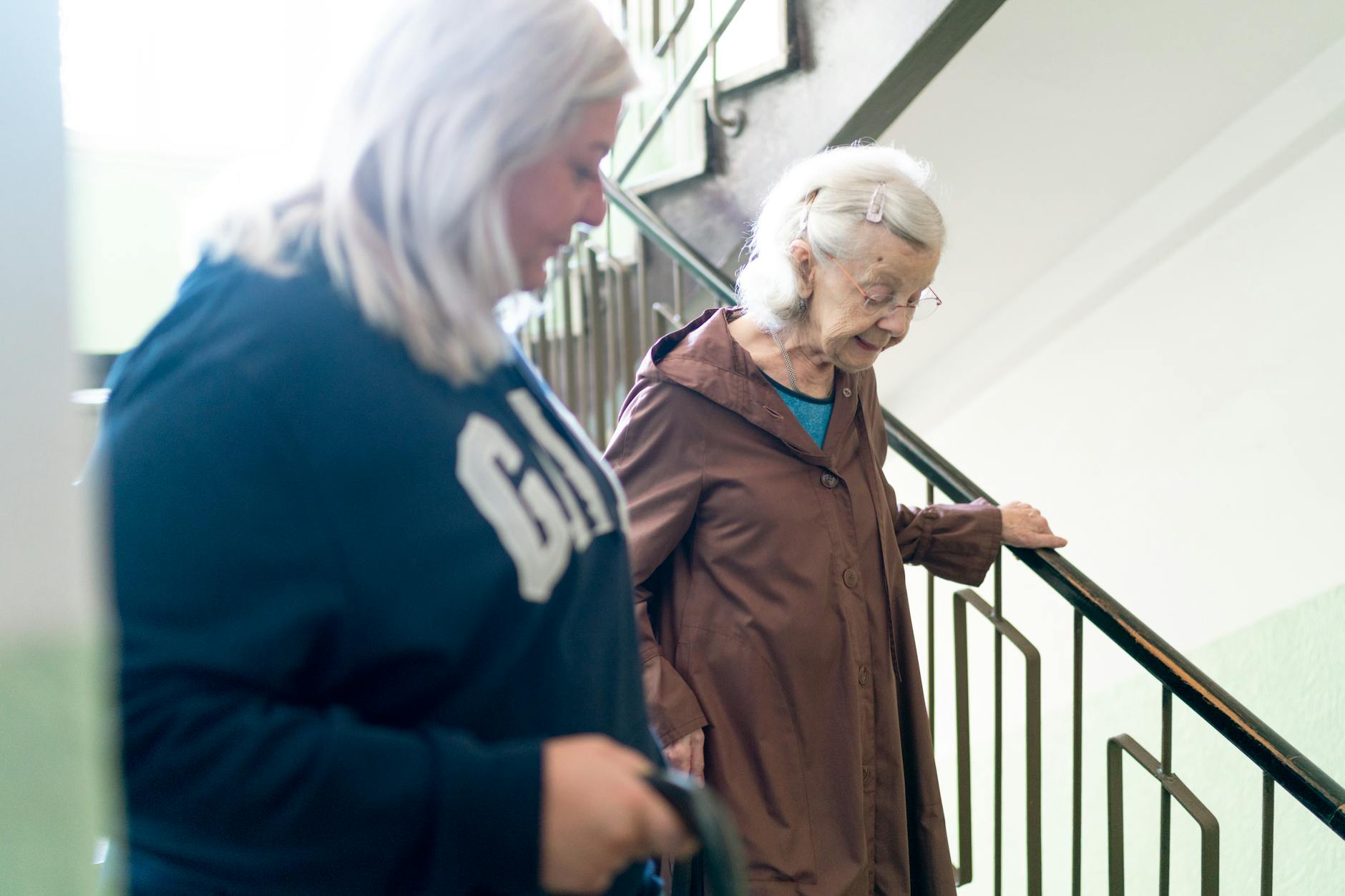
Photo by Jsme MILA
The very first case I had the opportunity to work on when I joined a caregiving agency was of an elderly woman who resided at an assisted living facility and had fallen. She was required to use a walker but left it in her room. She went downstairs to the dining room and out to the front of the building. The pathway to the front of the building is an uneven stone pavement.
It had been a week since she had fallen when I was asked to sit by her bedside, and since her chances were not improving, she had to be placed in the care of Hospice. That case is always a reminder to me when caring for those who are ordered to use a walker that I ensure their compliance. And, at the forefront of my mind always is how to keep our aging seniors safe in their homes and as they travel outdoors.
As we age, our bodies and minds go through various changes. These transitions can make some daily activities more challenging and require extra care. Whether it's a shift in mobility, cognition, or overall health, approaching certain activities with caution is essential for safety and well-being.
Let's take a look at some primary considerations:
Managing Physical Activity
Physical activity is crucial for seniors, but not all activities are created equal. Some require a more cautious approach to avoid injuries and maintain overall health. What our minds tell us that we can attempt does not always align with our capabilities. Reminding ourselves to "remember when " is always good. Falls at the age of over 65 are considered quite a health hazard. Watch your step is real. Here is an informative guide from the website of the (NIH)
https://www.nia.nih.gov/sites/default/files/2022-08/tips-prevent-falls-infographic.pdf
High-Impact Exercises
Engaging in high-impact exercises like running or intense aerobics can lead to injuries such as sprains or fractures. Slow down if you are feeling stressed. The risk increases with age as joints become less resilient. Instead, seniors might consider gentler alternatives like walking or swimming. These options provide a good workout while being easier on the joints.
Strength Training Considerations
Strength training has tremendous benefits, such as improving muscle tone and increasing metabolism. However, seniors must focus on proper technique. Incorrect lifting can lead to injuries. Consulting with a fitness professional can help seniors learn the right methods and develop a safe workout routine. Why exercise is imperative is discussed here in this helpful video from the website of the (NIH)
https://youtu.be/n5kWf0pvEkc?si=-CKSSLGaQ0zmh6M7
Balance and Coordination Exercises
Balance and coordination exercises are vital for maintaining stability and preventing falls. Activities like tai chi or yoga can enhance balance, but seniors need to understand their limits. Practicing these exercises in a safe environment, with support if necessary, can make a significant difference. Do what you can for as long as you can to keep your strength up.
Navigating Social Situations
Socializing is also essential for mental health, but some social activities may pose challenges. Many seniors complain of loneliness and may seek out outdoor activities. The senior center in your area is a good place to start.
Large Gatherings
Large gatherings can be overwhelming and lead to overstimulation or fatigue. Seniors should consider their comfort levels before attending. Preparing by having a quiet space to retreat to during events can help manage any feelings of anxiety or overwhelm. Do not worry that you do not look the way you used to do in former days. Most people will just be happy to see your face and chat with you.
Transportation Challenges
Getting to social events can sometimes be tricky. Seniors should explore safe transportation options, whether it’s relying on family members, using community shuttles, or taxis. Familiarity with routes and scheduling can ease the worry of getting to and from gatherings. Seek out a buddy to travel with and remember inviting someone else may just be what someone else needs.
Everyday Chores and Household Tasks
Daily household chores can sometimes become hazardous if not approached carefully. Here are common tasks seniors should be mindful of:
Climbing Ladders or Reaching High Places

(The image was AI-generated)
Activities like climbing ladders or trying to reach high shelves can result in falls. It’s best to avoid these situations and use tools like grabbers or enlist help from friends or family when needed.
Heavy Lifting and Carrying
Heavy lifting poses risks such as strains or back injuries. Seniors should use proper lifting techniques, which include bending at the knees and keeping loads close to the body. If an item is too heavy, asking for help is a smart choice. If you can afford it have a home caregiver come in maybe once per week to help with chores. Maybe grown grandchildren will be happy to show off their strength so ask.
Health Management Activities
Managing health is another area where caution is crucial. Here are key activities requiring careful attention:
Medication Management
Taking medications correctly is vital for health management. Seniors should have a reliable system in place to avoid confusion over dosages. Pill organizers or reminder apps can be helpful. Incorrect dosage can lead to serious health risks, so being organized is key.
Attending Medical Appointments Alone
Going to medical appointments can sometimes result in missed information. Seniors may benefit from bringing a companion who can help take notes or ask questions. This support can make navigating healthcare much easier and less stressful.
Recap of Daily Activities Seniors Should Approach with Caution
Medication management
- Organizing pills and understanding dosages is essential.
Climbing ladders or reaching high places
- Use tools or assistance to avoid falls.
Heavy lifting and carrying
- Employ proper techniques or request help.
High-impact exercises
- Select low-impact alternatives to avoid injuries.
Strength training
- Focus on technique and seek professional guidance.
Large gatherings
- Prepare for potential overstimulation by having a quiet space.
Transportation challenges
- Use safe methods to navigate social events.
Conclusion
Always being aware of the potential risks associated with daily activities can help seniors stay safe while maintaining their independence. Adapting approaches to physical activity, socializing, tackling chores, and managing health can significantly improve quality of life. By taking the time to be cautious in these areas, seniors can better enjoy their daily routines and stay engaged in life.
Until next time-
CareGiverDaze
